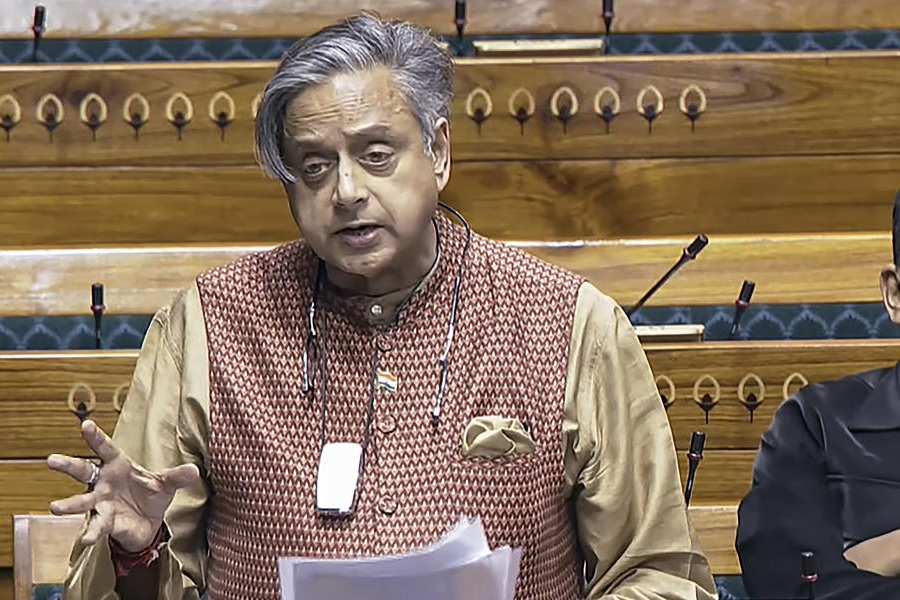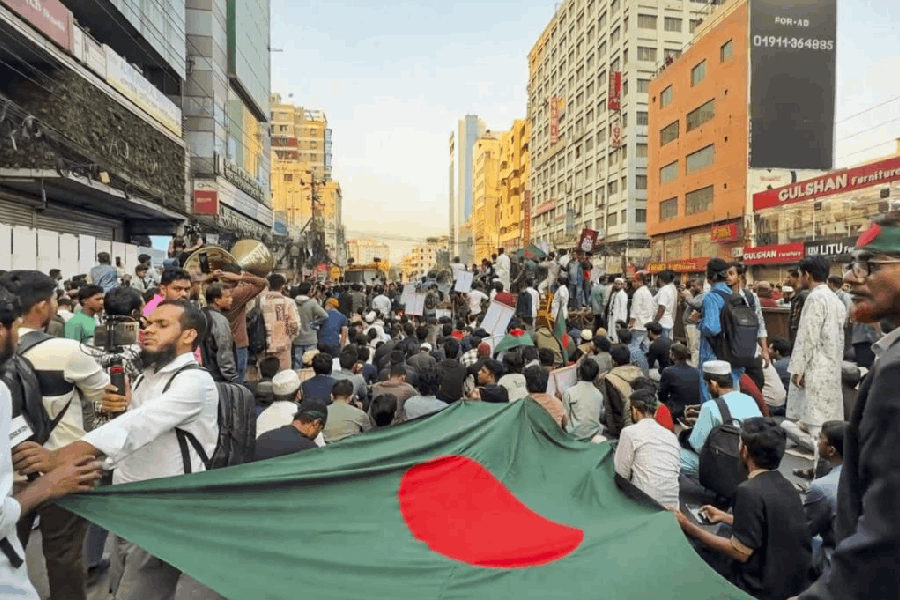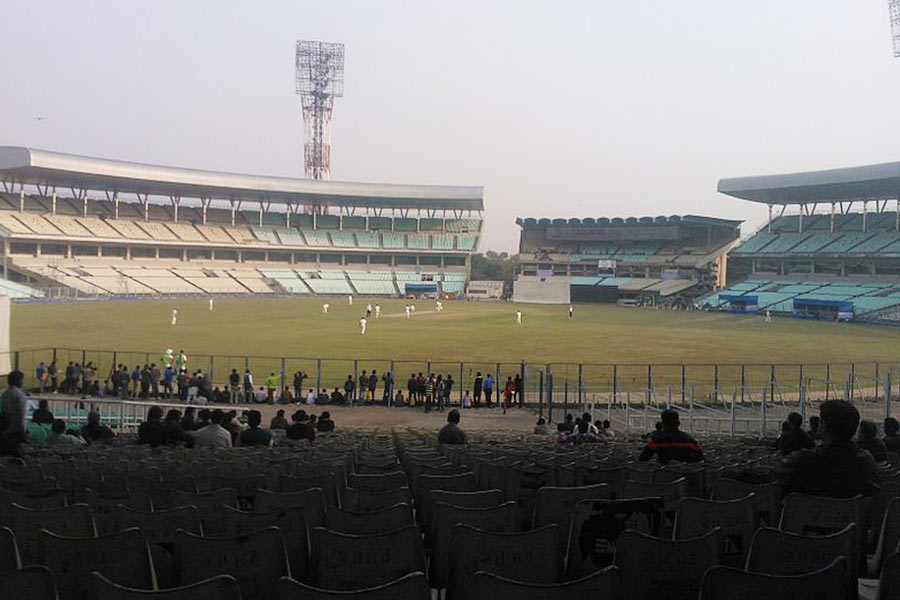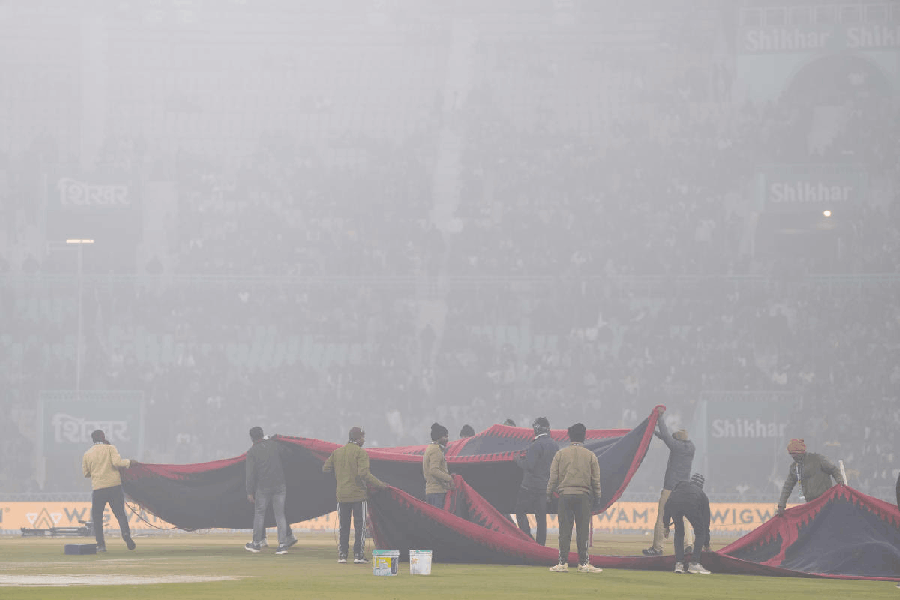 |
| Comeback song: Purabi Dutta on stage (Picture by Koela Bagchi) |
It was a vicarious experience to enter Rabindra Sadan after reeling for hours in the sweltering summer heat and listen to Abhirup Guhathakurta singing a Rabindrasangeet, Aji bijan ghare nishithrate. Such experiences remained etched in mind as the curtain came down on the 8th edition of Bangla Sangeet Mela (April 14-22) organised by the state government. Inspite of inadequate publicity and half-filled auditorium greeting the artistes, the Mela reaffirmed its claim to represent all the existing trends of Bangla Gaan under one umbrella.
Let’s leave aside Rabindrasangeet and focus on the other genres of Bangla music. Overall, it was a good year for Nazrul’s music with the veterans Shankarlal Mukhopadhyay and Shankar Ghosal excelling and youngsters like Nupur Gangopadhyay shining along. Purabi Dutta, arguably the prima donna of Nazrulgeeti, made a successful return to stage after a year and a half. Mane parhe aaj se kon janame she sang, followed by Nirandhra meghe andha gokul. She has made the former his signature anyway, but the latter was a gem unearthed. Mythical allusions to Krishna’s departure from Vrindaban was there but it requires the regal command of an exponent to turn that tearful farewell into a catastrophic one.
Bangla Sangeet Mela has done its bit to set the stage once more for the singers past their prime. Take Gorachand Mukhopadhyay, for instance. This intense romantic crooner from the 1960s is not heard in public but the manner in which he stretched his tremolo-laden voice to magical effect in Ektu age tomar katha bhabchhilam, a 1969 chart-topper tuned by Prabir Maju-mdar, was exemplary. Arun Dutta rendered two Satinath Mukhopadhyay compositions dating back to 1967. Se janina kothay/Tare mo-ne parhe jay stood out for simplicity of expression and candid tone. It was retro music at its veracious best.
At times the singer becomes the song. It happened with Pintu Bhattacharya while rendering Shesh dekha sei rate, an outstanding Nachiketa Ghosh composition to sentimental Gouriprasanna Majumdar lyric. Delivered in a tempo slowed down to underline the intoxicating aura, Subir Sen’s Saradin tomay bhebe pointed towards a happy amalgamation of occidental ditties into mainstream Bangla music.
Sometimes banality can be blissful, as the Madhuri Chattopadhyay performance proved. The filigree-thin web of entrancement of her timbre had a mesmeric effect as she defined the romance of Tomaar amaar pratham dekha. It was the performance of the week.
New finds, Tania Paladhi and Nandini Chowdhury are talents poised for big stage. Turban-clad Sikh Manmohan Singh sprang a major surprise by presenting a self-composed paean to the victims of Bangladesh War of Liberation. Dolan Mitra revisited the situation in a Bengal village with a stirring adaptation of an adivasi poem.
Contemporary Bangla music disappointed. Bangla Band balloon has burst. Except for Rupkatha’s Ganatantre, all that the bands under scrutiny served was stale meal for college canteen. While listening to Srikanto Acharya rendering the Meghpioner bager bhetar from the film Titli, one rued why Rituparno Ghosh doesn’t take writing lyrics seriously.
Organisers have dropped the session on children’s song. Only Sanat Sinha stood tall. Comedy and parody had a few good men to deliver. Alok Roy Chowdhury did smart work of Paramayu jabe chherhe, a Parimal Goswami take on Tagore to poke fun at the quality of food available in the ration.
Mukta Mancha had a rollicking time with flamboyant Gopal Adhikari from Haldia. This unpredictable performer makes use of street-smart wisdom to hit out at absurdities and aberrations in society. His latest, Emni teler gun, explored the whole gamut of connotations of the Bangla word ‘tel’ to humorous effect.
Tucked into a corner, Lok Mancha saw torchbearers of folk tradition at their passionate best, surpassing their urban stepbrothers in every aspect. One Sasthi Khepa or a Dindayal from Nadia can make one’s heart throb, watching Bhajan Das from Bardhaman teaming up with Sona Khepa to break into a frenzied gig, one starts appreciating the mystery beneath the façade of Baul philosophy.
However, the most moving of all recitals was the one by Mira Biswas. Over the years she has lost her reputation, her vision, but not her voice. Escorted on the Rabindra Sadan stage by Nirmala Mishra on the penultimate session, Biswas struck the first chord at tivra gandhar and the audience was lit up by virtue of an impeccably pitched dulcet voice.
Her soprano kept opening up as she kept soaring over the octaves. It was song-sung-true as she rendered Lata Mangeshkar hits, alluding to vision, both physical and metaphysical. Amaar nayan duti shudhui tomare chahi/ Byathar badale jay chheye from Salil Chowdhury’s Akashpradip jwale couldn’t have a better interpretation.










